Why do antibiotics cause a yeast infection. Antibiotics and Yeast Infections: Understanding the Link and Prevention Strategies
Can antibiotics cause yeast infections. How do antibiotics contribute to candida overgrowth. What are the symptoms of a yeast infection. Which antibiotics are most likely to cause yeast infections. How can you prevent antibiotic-induced yeast infections.
The Connection Between Antibiotics and Yeast Infections
Antibiotics are powerful medications designed to fight bacterial infections. However, they can sometimes lead to unintended consequences, such as yeast infections. To understand this connection, we need to delve into the delicate balance of microorganisms in the human body, particularly in the vaginal area.
The vagina naturally contains a mix of bacteria and yeast. In a healthy state, beneficial bacteria like Lactobacillus help maintain a slightly acidic environment, which keeps yeast growth in check. When antibiotics are introduced, they don’t discriminate between harmful and beneficial bacteria, often wiping out both. This disruption can create an environment where yeast, particularly Candida albicans, can thrive and overgrow, leading to a yeast infection.

How do antibiotics disrupt vaginal flora?
Antibiotics work by targeting and eliminating bacteria. While this is beneficial for treating bacterial infections, it can have the following effects on vaginal health:
- Elimination of beneficial Lactobacillus bacteria
- Reduction in the production of lactic acid, which helps maintain vaginal pH
- Creation of an environment more conducive to yeast growth
- Potential overgrowth of Candida albicans, leading to infection
Identifying Antibiotics Most Likely to Cause Yeast Infections
While not all antibiotics cause yeast infections, certain types are more commonly associated with this side effect. Understanding which antibiotics pose a higher risk can help patients and healthcare providers make informed decisions about treatment options.
Which antibiotics are most frequently linked to yeast infections?
The following antibiotics have been identified as having a higher likelihood of causing yeast infections:
- Amoxicillin: A penicillin-like antibiotic used for various bacterial infections
- Tetracyclines: Including doxycycline and minocycline, used for skin infections and acne
- Carbapenems: Such as ertapenem and meropenem, used for serious infections
- Quinolones: Including ciprofloxacin and levofloxacin, prescribed for respiratory and urinary tract infections
It’s important to note that while these antibiotics have a higher association with yeast infections, individual responses can vary. Some people may be more susceptible to developing yeast infections than others, regardless of the type of antibiotic used.

Recognizing the Symptoms of a Yeast Infection
Being able to identify the symptoms of a yeast infection is crucial for prompt treatment and relief. While some symptoms may be similar to other vaginal conditions, there are specific signs that point to a yeast infection.
What are the common symptoms of a vaginal yeast infection?
Typical symptoms of a yeast infection include:
- Intense itching in the vaginal area
- Burning sensation, especially during urination or intercourse
- Redness and swelling of the vulva
- Thick, white, odorless discharge with a cottage cheese-like consistency
- Soreness and irritation in the vagina and vulva
If you experience these symptoms, especially after a course of antibiotics, it’s important to consult with a healthcare provider for proper diagnosis and treatment.
Treatment Options for Antibiotic-Induced Yeast Infections
Fortunately, yeast infections are generally treatable with over-the-counter or prescription medications. The choice of treatment often depends on the severity of the infection and individual patient factors.
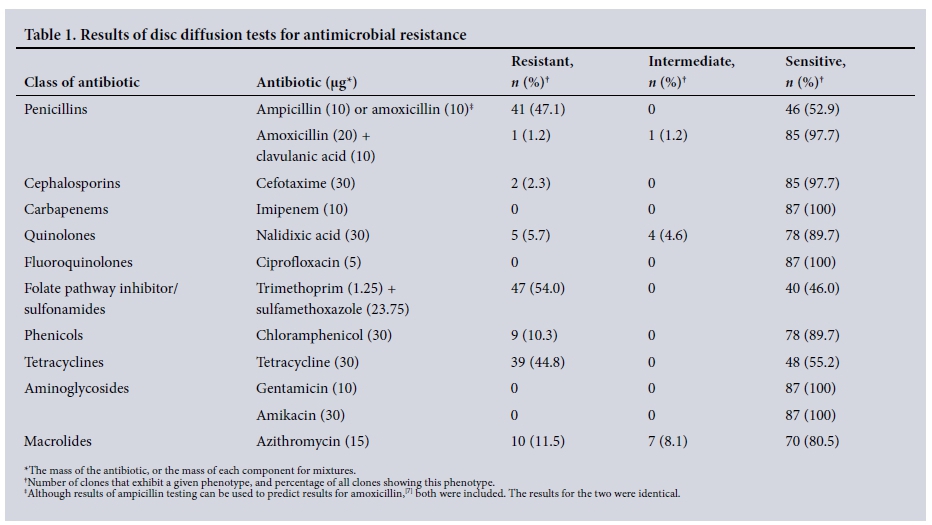
How are yeast infections typically treated?
Treatment options for yeast infections include:
- Over-the-counter antifungal creams, ointments, or suppositories (e.g., miconazole, clotrimazole)
- Prescription oral antifungal medications (e.g., fluconazole)
- Longer courses of treatment for recurrent infections
- Boric acid suppositories for resistant infections
It’s crucial to complete the full course of treatment, even if symptoms improve, to ensure the infection is fully cleared.
Preventing Yeast Infections While Taking Antibiotics
While it’s not always possible to prevent a yeast infection when taking antibiotics, there are steps you can take to reduce your risk.
How can you minimize the risk of developing a yeast infection during antibiotic treatment?
Consider the following preventive measures:
- Take a probiotic supplement containing Lactobacillus species
- Consume probiotic-rich foods like yogurt or kefir
- Avoid douching or using scented feminine hygiene products
- Wear breathable, cotton underwear
- Avoid tight-fitting clothing
- Maintain good hygiene, but avoid over-washing the vaginal area
Discussing these preventive strategies with your healthcare provider can help you develop a plan tailored to your individual needs.
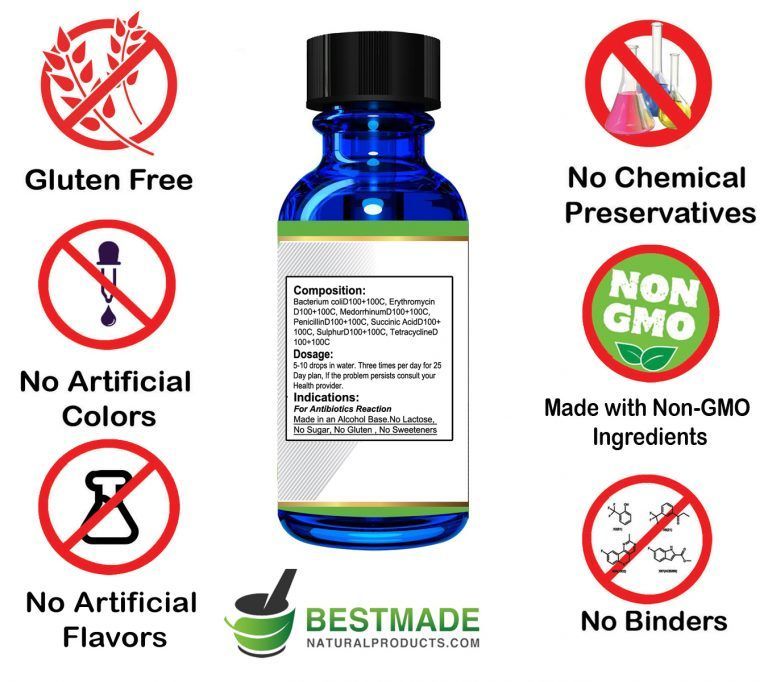
Understanding Risk Factors for Yeast Infections
While antibiotic use is a significant risk factor for yeast infections, other factors can also increase susceptibility. Understanding these risk factors can help individuals take appropriate precautions.
Who is most at risk for developing yeast infections?
Factors that can increase the risk of yeast infections include:
- Being of reproductive age
- Using hormonal contraceptives
- Having a weakened immune system
- Being pregnant
- Having uncontrolled diabetes
- Using douches or vaginal sprays
- Wearing tight or non-breathable clothing
Individuals with these risk factors should be particularly vigilant about maintaining vaginal health, especially when taking antibiotics.
The Importance of Completing Antibiotic Courses
Despite the risk of yeast infections, it’s crucial to complete prescribed antibiotic courses as directed by your healthcare provider. Failure to do so can lead to antibiotic resistance and persistent infections.
Why is it essential to finish your antibiotic prescription?
Completing your antibiotic course is important for several reasons:
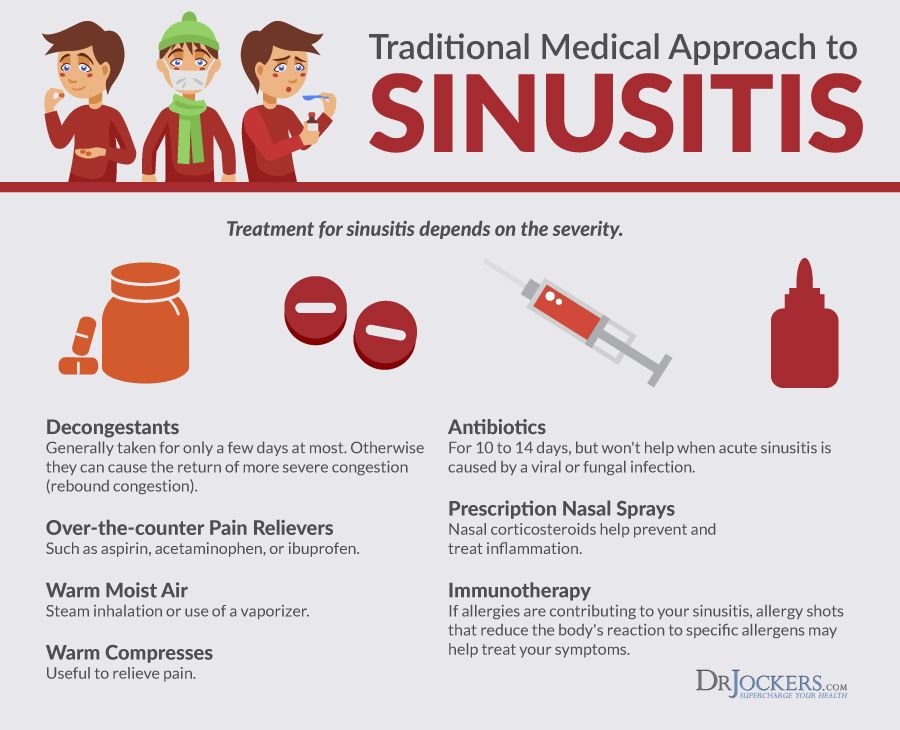
- It ensures the complete eradication of the targeted bacterial infection
- It helps prevent the development of antibiotic-resistant bacteria
- It reduces the risk of recurrent infections
- It supports overall health and recovery
If you’re concerned about the risk of yeast infections, discuss alternative antibiotics or preventive measures with your healthcare provider rather than discontinuing treatment prematurely.
When to Seek Medical Attention
While many yeast infections can be treated with over-the-counter medications, there are instances where professional medical care is necessary.
In what situations should you consult a healthcare provider for a potential yeast infection?
Seek medical attention if:
- It’s your first yeast infection
- Symptoms persist after over-the-counter treatment
- You experience recurrent yeast infections
- You’re pregnant
- You have severe symptoms or fever
- You’re unsure if it’s a yeast infection or another condition
A healthcare provider can provide a definitive diagnosis and recommend the most appropriate treatment plan for your situation.

Understanding the link between antibiotics and yeast infections empowers individuals to take proactive steps in maintaining their vaginal health. By recognizing the symptoms, implementing preventive measures, and seeking appropriate medical care when needed, you can minimize the impact of antibiotic-induced yeast infections on your overall well-being. Remember, while antibiotics are essential for treating many bacterial infections, being aware of their potential side effects allows for better management of your health during treatment.
Can Antibiotics Cause Yeast Infection (Candidiasis)?
Written by
Juhi Modi
Medically reviewed by
HaVy Ngo-Hamilton, Pharm.D.
| Jun 21, 2022
A vaginal yeast infection is a fungal infection caused by a fungus called Candida albicans. It causes itching, irritation, and discharge in the vagina and vulva (vaginal opening). Approximately 3 out of 4 women will suffer from symptomatic yeast infections in their lifetime. Medications can effectively treat most yeast infections. However, some women experience recurrent yeast infections and require longer treatment courses. Certain things can increase your risk of getting a yeast infection. This article will explain the link between antibiotic use and yeast infections. We will also talk about which antibiotics can cause yeast infections and how you can prevent them.
What are vaginal yeast infections?
As mentioned above, vaginal yeast infections, also called vaginal candidiasis, are fungal infections caused by Candida albicans. This fungus thrives in warm, moist areas such as the mouth and genitals. In healthy women, the fungus is kept in check by beneficial bacteria, also referred to as the “good bacteria” in the vagina flora. However, having a weakened immune system or taking certain antibiotics that can wipe out the “good’ bacteria population. Fungi then grow and become more dominant, which is when you can experience symptoms of a yeast infection.
Can antibiotics cause candida yeast?
Yes, antibiotics can cause vaginal candidiasis. Here’s how. A healthy vagina has a balanced mix of yeast and bacteria. A specific type of bacteria called Lactobacillus help to maintain a slightly acidic environment in the vagina, which keeps the yeast in check and prevents overgrowth.
Certain broad-spectrum antibiotics prescribed to treat a bacterial infection caused by harmful bacteria also wipe out beneficial bacteria like Lactobacillus. In other words, antibiotics kill both harmful and healthy bacteria.
In other words, antibiotics kill both harmful and healthy bacteria.
As a result, the vagina becomes less acidic, and the yeast can grow out of control, leading to a vaginal infection.
Which antibiotics cause yeast infections?
Not all antibiotics cause vaginal infections. Antibiotics that can increase your risk include:
- Amoxicillin: a penicillin-like antibiotic used to treat a wide variety of bacterial infections such as middle ear infections, strep throat, skin infections, pneumonia, urinary tract infections, and others.
- Tetracyclines: (examples include doxycycline, minocycline, and tetracycline) are used to treat ear infections, skin infections, acne, and sexually transmitted infections.
- Carbapenems: (examples include ertapenem and meropenem), which are used to treat serious intra-abdominal infections, bacterial meningitis, antibiotic-resistant pneumonia, and urinary tract infections that are resistant to other antibiotics.

- Quinolones: (examples include moxifloxacin, levofloxacin, and ciprofloxacin), which are prescribed for bronchitis, pneumonia, UTIs, and bacterial prostatitis.
What are yeast infection symptoms?
Common symptoms of yeast infections include vulvar and vaginal itching, soreness, irritation; redness and swelling of the vulva; a thick, white vaginal discharge that looks like cottage cheese; pain during sex; and discomfort or pain during urination.
How do doctors treat vaginal candidiasis?
Most vaginal yeast infections can be treated with a short course of antifungal medicine for 3-7 days. Antifungal medications are available as tablets, creams, ointments, and suppositories. Examples, include terconazole and miconazole (Monistat 3). Doctors can also prescribe a single-dose antifungal medicine such as oral fluconazole (Diflucan). A longer course of treatment may be required for severe symptoms or recurrent yeast infections.
What are the risk factors for a vaginal yeast infection?
Any woman of any age can get a yeast infection. In fact, most women will get a yeast infection at some point in their lifetime, but the risk of developing a yeast infection is higher:
- During the childbearing years (after puberty and before menopause).
- At the time of initiating sexual activity for the first time (vaginal yeast infections are not sexually transmitted infections, but there is evidence that they are linked to oral-genital sex).
- If you are taking antibiotics that kill healthy bacteria in the vagina.
- If you have high estrogen levels (for example, if you are taking a birth control pill that contains high-dose estrogen or are on estrogen hormone therapy).
- If you have a weakened immune system or diabetes (high blood sugar).
How to prevent a vaginal yeast infection?
Antibiotic use is a known cause of vaginal yeast infections. That’s why it’s important only to take antibiotics as prescribed by your doctor. Also, it is important to know that antibiotics do not treat viral infections such as colds and the flu.
That’s why it’s important only to take antibiotics as prescribed by your doctor. Also, it is important to know that antibiotics do not treat viral infections such as colds and the flu.
If you must take antibiotics, make sure you finish the full course prescribed by your doctor to prevent antibiotic resistance.
Also, if you are at a higher risk of vulvovaginal candidiasis due to certain health conditions, talk to your doctor. Your doctor may recommend over-the-counter antifungal creams or suppositories to prevent vulvovaginal candidiasis caused by antibiotic treatment.
Probiotic supplements contain good bacteria. There is evidence that probiotics promote vaginal health, so they may help prevent yeast infections caused by antibiotic use.
Avoid douching, which removes healthy bacteria from your vagina. Also, avoid vaginal deodorant products such as fragranced tampons, pads, powders, and sprays.
It’s important to change out of wet underwear and bathing suits as soon as possible because the yeast thrives in moist environments.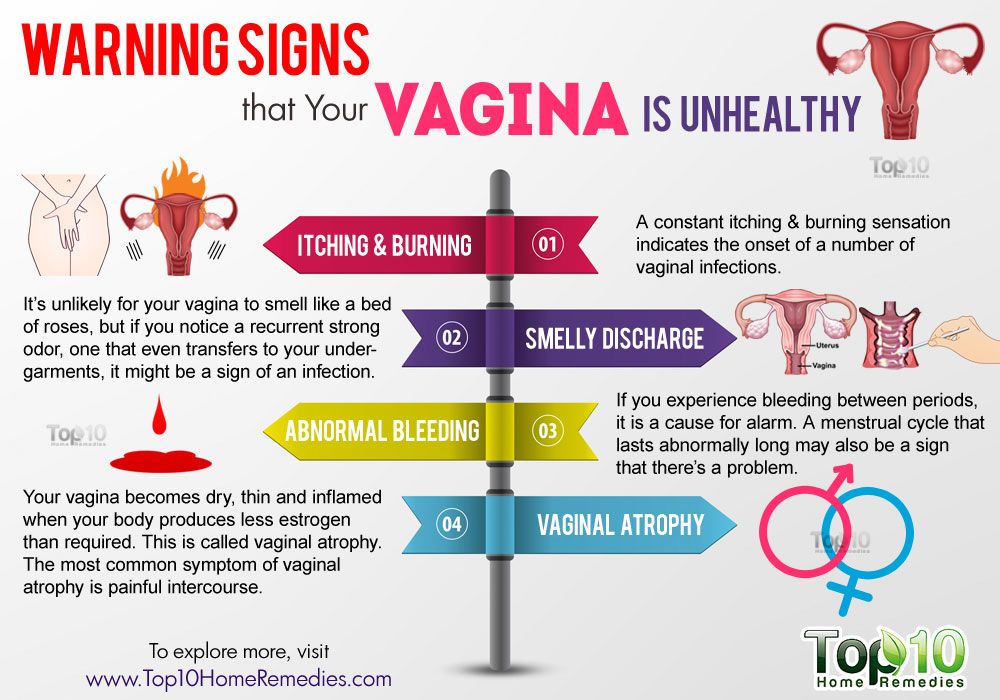 Cotton underwear can reduce your risk of getting yeast infections and other vaginal infections by absorbing moisture. The same is true for loose-fitting clothing, as tight pants can build heat and moisture, leading to a yeast infection.
Cotton underwear can reduce your risk of getting yeast infections and other vaginal infections by absorbing moisture. The same is true for loose-fitting clothing, as tight pants can build heat and moisture, leading to a yeast infection.
Lastly, you should avoid often use of hot tubs and very hot baths because yeast thrives in warm environments.
Wrapping Up
Along with harmful bacteria, certain antibiotics kill good bacteria in the vagina, which usually keeps the vagina slightly acidic. This can lead to yeast growth and a vaginal yeast infection.
While taking antibiotics, if you develop symptoms of a yeast infection caused by Candida fungi, such as intense itching, irritation, discharge, and a burning sensation from the vaginal area, contact your healthcare provider for professional medical advice and diagnosis and treatment.
Reference:
- https://www.mayoclinic.org/diseases-conditions/yeast-infection/symptoms-causes/syc-20378999#
Can Antibiotics Give You a Yeast Infection: Causes and Risk Factors
Antibiotics and Yeast Infections
Taking antibiotics is one of the best ways to combat bacterial infections. This is why doctors prescribe antibiotics whenever their patients suffer from conditions like ear infections, strep throat, urinary tract infections (UTI), and many more. However, there are also certain instances where taking antibiotics may cause the body harm instead of helping it recover. One good example is the development of new infections, such as bacterial vaginosis or a yeast infection, also known as vaginal candidiasis.
This is why doctors prescribe antibiotics whenever their patients suffer from conditions like ear infections, strep throat, urinary tract infections (UTI), and many more. However, there are also certain instances where taking antibiotics may cause the body harm instead of helping it recover. One good example is the development of new infections, such as bacterial vaginosis or a yeast infection, also known as vaginal candidiasis.
How can antibiotics give you a yeast infection if they are prescribed to fight against bacteria?
Certain factors like microbiome imbalance could play a vital role in developing a yeast infection through antibiotics. This article discusses what a vaginal yeast infection is, how it affects the body, and how it can grow from taking antibiotics. Read on to learn more.
How Effective are Antibiotics?
Antibiotics are helpful for most bacterial infections, but many studies have shown their efficacy in treating vaginosis symptoms. Two specific types of antibiotics called clindamycin and metronidazole are believed to be the most common and efficient ways to treat vaginosis.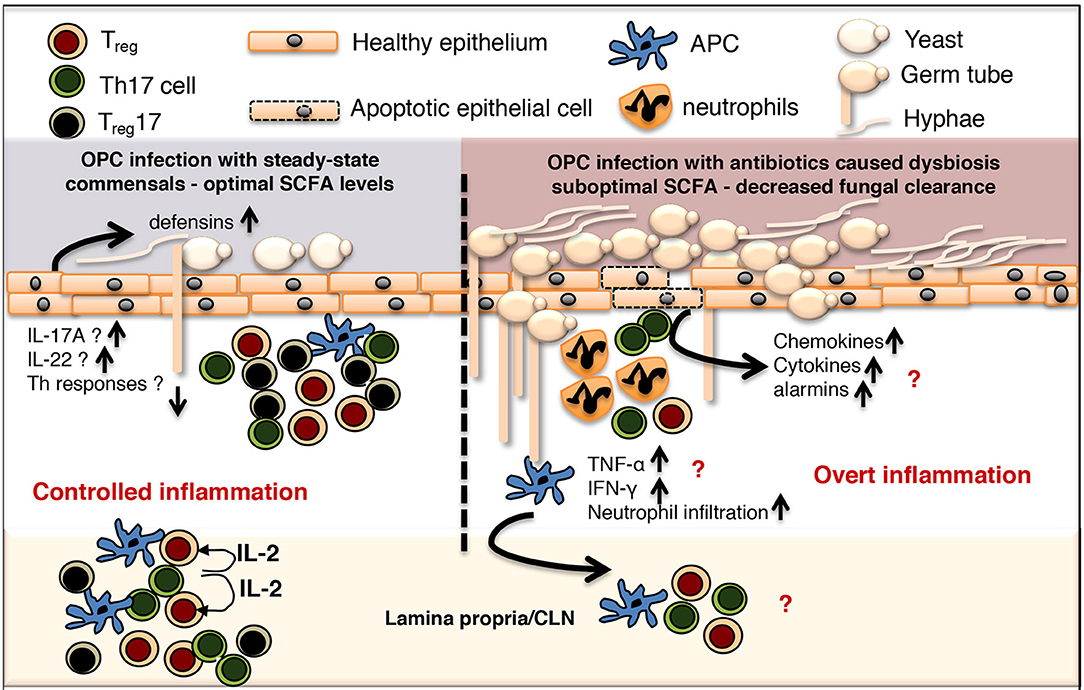 A study on these two kinds of antibiotics has reported that 90% of women experienced no symptoms of vaginosis after using them.
A study on these two kinds of antibiotics has reported that 90% of women experienced no symptoms of vaginosis after using them.
A similar study on the effects of clindamycin on vaginosis also showed that 88% of patients did not exhibit vaginosis symptoms one to two weeks after receiving treatment. At the same time, 50% received no symptoms one to two weeks after receiving the placebo treatment. About half of the women in these studies experienced symptoms only a year after their first infection. Today, further studies and research are being conducted to reveal more about the effectiveness of antibiotics for vaginosis cases.
How Are Antibiotics Used?
Antibiotics target significant or severe bacterial infections that the body’s immune system cannot resolve. These infections often include whooping cough or UTI, which usually require prescribed medication to relieve symptoms. Antibiotics are effective in treating most bacterial infections but not all of them. Some viral infections like the common cold and sore throats aren’t meant to be treated by antibiotics.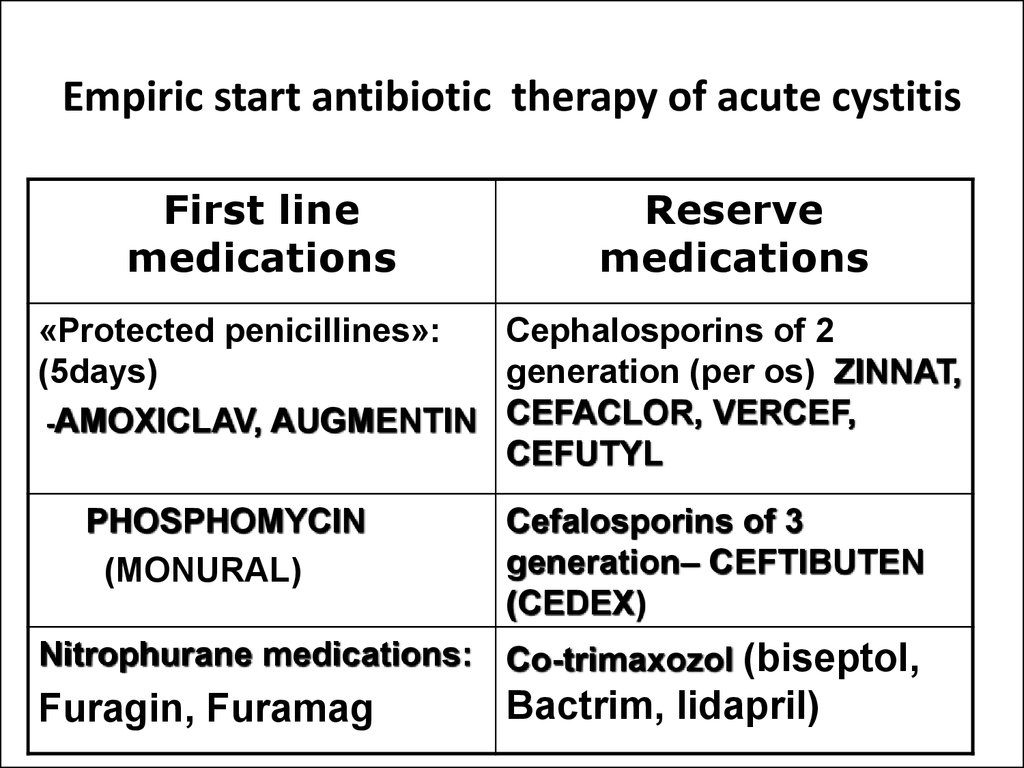
The Three Forms of Antibiotics
Antibiotics come in three forms. The most common type of antibiotic is oral antibiotics. Oral antibiotics may come in pill or liquid form to treat minor infections. Topical antibiotics are usually infused in creams or lotions for skin infections. Lastly, antibiotics can be injected into the body if severe conditions have been found within the blood or the muscles. Antibiotics can harm the body if taken outside of a medical prescription, so consult a healthcare professional if you feel you need to take antibiotics.
Can Antibiotics Give You a Yeast Infection?
Many cases and studies have proven that antibiotics can cause vaginal candidiasis. However, the results of those studies have also shown that not all types of antibiotics can cause this infection.
Antibiotics that can Cause a Yeast Infection
Vaginal candidiasis can develop when you consume two types of antibiotics: tetracyclines and quinolones. Tetracycline is an antibiotic most commonly used to treat conditions like UTIs or sexually transmitted infections.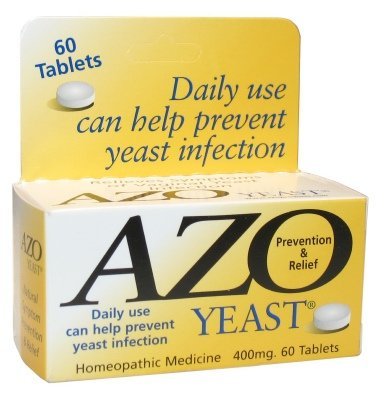 Quinolones are also used to treat UTIs and cure bacterial prostatitis and pneumonia. These two types of antibiotics are most likely to cause vaginal candidiasis. However, broad-spectrum penicillin has also been cited as a leading cause in some cases. Using these antibiotics can result in an overgrowth of yeast, eventually leading to an infection.
Quinolones are also used to treat UTIs and cure bacterial prostatitis and pneumonia. These two types of antibiotics are most likely to cause vaginal candidiasis. However, broad-spectrum penicillin has also been cited as a leading cause in some cases. Using these antibiotics can result in an overgrowth of yeast, eventually leading to an infection.
Why Do You Get a Yeast Infection from Antibiotics?
The function of antibiotics is to eliminate harmful bacteria from the body. However, infections may develop from the instances where the antibiotics eliminate the good bacteria found in the vagina while treating another bacterial infection. For example, a bacteria called “lactobacillus” can be found in the vagina. This protects it from vaginosis by making the vagina more acidic. When the antibiotics disable the effects of the lactobacillus bacteria, the body experiences an imbalance or lack of good bacteria within the vagina. This causes the yeast to develop, which means you will likely get an infection after taking certain antibiotics.
Preventing a Yeast Infection from Antibiotics
Vaginal candidiasis can be annoying and uncomfortable, especially if you are recovering from an initial condition. Unfortunately, reports have shown that hospitals in the USA receive an annual estimated over 1.4 million outpatient visits from women because of vaginal candidiasis. Here’s how you can protect yourself from becoming a part of that number.
The best and most effective way to prevent vaginal candidiasis from developing after taking antibiotics is only to take antibiotics as prescribed to you by a doctor or healthcare professional. This is because taking antibiotics causes an imbalance of bacteria in the body, which will only be intensified and possibly cause harmful effects if you take them without a prescription.
7 Tips to Prevent Yeast Infection from Antibiotics
There are many ways to protect against vaginal candidiasis developing while taking antibiotics. For the best results, try to practice these simple habits while taking antibiotics to prevent a bacterial infection.
1. Avoid hot water and stick to cold or lukewarm water during baths. Yeast is more likely to grow when the body is subjected to increased heat.
2. Avoid tight clothing. Tight clothing can cause the body to feel warmer, encouraging yeast growth in the vagina. Try using comfortable and loose clothing instead.
3. Avoid feminine hygiene products. Although these products are advertised to protect against vaginal infections and other similar conditions, the level of acidic pH inside these products can cause an imbalance in the vagina’s bacterial count, which causes infection.
4. Do not use scented tampons. Like feminine products, these tampons also contain certain ingredients in the material that can disrupt the body’s natural bacterial count.
5. Wear condoms during sexual intercourse. It’s better to be safe during sex, as your partner’s penis or fingers may have traces of bacteria that could lead to vaginal yeast infection.
6. Only take antibiotics when prescribed.
7. Practice quality personal hygiene
Risk Factors for Developing Yeast Infections While on Antibiotics
Many factors can cause the development of vaginal candidiasis after taking antibiotics. In some cases, the initial condition can also cause an infection. In contrast, the risk of certain conditions is only enhanced once the antibiotics enter the body.
Here are some of the most common causes:
- Weak immune system – A more vulnerable immune system cannot protect the body from bacterial infections like a vaginal yeast infection. This can be caused by other medication or treatment practices, like chemotherapy.
- Pregnancy – Pregnant women are more prone to vaginal yeast infections due to the changes in their hormones during pregnancy. This causes an increased vaginal discharge.
- Diabetes – Higher blood sugar levels can be a root cause of vaginal yeast infections.
- Sexual intercourse – Sexual intercourse requires a lot of bodily contact while allowing bacteria to be passed on from one sexual organ to another during the process.
 This can cause vaginal candidiasis to develop.
This can cause vaginal candidiasis to develop.
How to Treat Yeast Infections Caused by Antibiotics
According to the Centers for Disease Control and Prevention (CDC), HHS, it can be challenging to combat the treatment-resistant strain of yeast. This type of yeast has grown resistant to most treatments. It will stubbornly linger within the body, despite being subjected to several treatments. However, other studies have also presented possible options for treatment.
Using Probiotics
The results of a study on the effects of probiotics for treating bacterial vaginosis in adult women: a meta-analysis of randomized clinical trials have shown that probiotics can be used in yeast infection treatment. Probiotics have good bacteria, often used to prevent an overgrowth of unhealthy bacteria in the body. By using these probiotics, the body is exposed to a predominant group of bacteria that can be used to treat the stubborn effects of the infection. In addition, these probiotics produce antimicrobial substances that help cleanse the body of the effects of an infection. This helps resolve the bacterial imbalance initially caused by taking antibiotics.
This helps resolve the bacterial imbalance initially caused by taking antibiotics.
Frequently Asked Questions
Conclusion
Vaginal candidiasis may be challenging to deal with, especially if you are already battling the symptoms of an initial condition. When you begin seeing signs of developing an infection, do not take any additional medication or stop taking your current antibiotics. Before making any decisions, contact your doctor or a healthcare professional for advice.
Vaginal itching – PCMC medical blog article
Vaginal itching is sometimes accompanied by painful sensations and can cause severe discomfort. This symptom is incredibly common among women. When the delicate areas of the vagina, clitoris, and vulva are inflamed and irritated, your whole day can be ruined.
There are many possible causes of vaginal irritation, including bacterial vaginosis, a sexually transmitted disease, a yeast infection, or menopause.
The use of chemical irritants such as creams, douches, and condoms can also cause itching. Many women are sensitive to birth control foams, fabric softeners, laundry detergents, and scented toilet paper. There is also a condition called lichen sclerosus, which causes white patches on the skin around the vulva and scarring in the vagina.
Many women are sensitive to birth control foams, fabric softeners, laundry detergents, and scented toilet paper. There is also a condition called lichen sclerosus, which causes white patches on the skin around the vulva and scarring in the vagina.
How can a woman tell if her symptoms are abnormal?
A clear or milky white discharge usually comes from the vagina. These secretions are produced by the glands of the cervix and the walls of the vagina and have a thick, liquid or pasty consistency. Normal vaginal discharge may be foul-smelling or odorless. When exposed to air, they turn white or yellow.
If you don’t have an infection, vaginal itching may go away on its own. Allergies to soap and scented toilet paper can be cured by simply not using these products, especially around the vagina. However, if your vaginal discharge is foul-smelling and has changed color, you may have an infection. The abnormal discharge may be thick, white and lumpy or green and yellowish in color and give off a foul odor.
When should I see a gynecologist for symptoms of vaginal itching?
If your vagina has a pronounced red tint, itches, you feel tired and weak with fever, then you should consult a gynecologist. These symptoms may be due to an infection requiring antibiotics. This type of infection can cause green, yellow, and cheesy discharge in the vagina. Signs of abnormal discharge may include inflammation of the skin around the vagina and vulva, as well as bleeding and discharge between periods.
Common causes of female itching
Bacterial vaginosis
Bacterial vaginosis is an infection often caused by smoking, unprotected sex, and douching. When you douche, you disturb the natural bacteria of the vagina, new sexual partners can also disturb the flora. The use of scented soaps, lotions, and perfumes can also lead to bacterial vaginosis. Anal sex, use of an intrauterine device, swimming in pools, and using public toilet seats can also cause this infection.
Since the balance of bacteria in the vagina is very sensitive, it is important to take precautions to maintain a healthy environment. You can do this by replenishing your body with good bacteria and by avoiding scented foods near your vagina. Symptoms of bacterial vaginosis include a thin, white, gray, or green discharge and a burning sensation when urinating. A fishy smell also comes from the vagina, which intensifies after sex.
Yeast infections
Yeast infections are common among women and are caused by the fungus Candida. This fungus is naturally present in the vagina, but when it gets out of control, it becomes a painful infection. This infection occurs when the balance of beneficial bacteria and yeast in the vagina is disturbed. While most infections are easily treatable, some are persistent and difficult to treat. If your immune system is weak, it may be harder to fight yeast than usual, allowing the infection to thrive.
Women can develop a yeast infection if they eat too much sugar, have diabetes, and are under stress. When hormones are out of alignment due to pregnancy, menopause, or birth control pills, yeast usually thrives. The use of antibiotics, douches, and vaginal sprays can also cause yeast infections. Although yeast is not a sexually transmitted disease, it can be passed from one person to another during sexual contact.
When hormones are out of alignment due to pregnancy, menopause, or birth control pills, yeast usually thrives. The use of antibiotics, douches, and vaginal sprays can also cause yeast infections. Although yeast is not a sexually transmitted disease, it can be passed from one person to another during sexual contact.
Yeast infection symptoms include thick, white, odorless discharge that looks like cottage cheese. The vagina and vulva swell, redden, become very irritated and itchy. You may experience pain during sex, frequent urination, and burning sensation when urinating.
Chemical irritants
Chemical irritants can irritate the vagina and cause itching and burning due to their toxic ingredients. The use of scented pads, toilet paper, and feminine sprays can cause an allergic reaction and irritation. As well as bathing in foam baths, disinfection and washing with perfumed soaps. To avoid vaginal itching, you should refrain from using scented toiletries. Also, to avoid vaginal irritation, wear cotton panties, avoid douching, and wipe from front to back after urinating.
Also, to avoid vaginal irritation, wear cotton panties, avoid douching, and wipe from front to back after urinating.
Menopause
When a woman reaches menopause, the hormones in her body change dramatically. Falling estrogen levels lead not only to hot flashes and night sweats, but also to vaginal dryness. As a result of changes in the chemical composition of the vaginal walls become thin and dry. The decrease in the amount of tissue causes itching and irritation of the vagina. To reduce these unpleasant symptoms, the doctor may prescribe estrogen pills, creams, or ring inserts.
General hormonal or pH imbalance
In addition to the changes in hormones associated with menopause, your body goes through hormonal changes that come and go over the course of a month. Hormone levels change when you are pregnant, have your period, or are on birth control pills. As your body goes through these changes, estrogen levels and pH are disrupted, which can lead to vaginal itching and dryness.
What are the common treatments for vaginal itching?
How to treat symptoms depends on the cause of vaginal itching. If you have a yeast infection, you will need an antifungal cream or tablets to help relieve your symptoms. Your gynecologist can often prescribe oral medications to get rid of the yeast. An over-the-counter cream is sometimes also effective in trying to clear up a yeast infection.
Bacterial vaginosis is treated by balancing the good and bad bacteria in the vagina. Antibiotics eliminate this infection and also restore the balance of beneficial bacteria in the body. Some women take natural supplements that include probiotics to help them feel better.
If chemical irritants are causing discomfort, stop using scented soaps and sprays for women, and avoid harsh laundry detergents. You should also stop douching and wearing synthetic underwear. Let your vagina breathe and wear panties made from natural fibers. Since the side effects of menopause contribute to vaginal discomfort, you can use a lubricant to soothe the itching.
Inherited milkmaid? – Euromed In Vitro
Obstetrician-gynecologist, endocrinologist, ultrasound specialist, PhD Tatyana Mikhailovna Lekareva talks about her medical practice and gives very important recommendations for the treatment and prevention of thrush.
Recently a woman with a 14-year-old daughter came to see me. She said that her baby girl has been experiencing intermittent whitish vaginal discharge for several months now. “My daughter has thrush from time to time, we have tried all sorts of medicines, nothing helps,” she said. “Probably, it was passed on to her from me, I have been suffering all my life.” Such a monologue, I think, is familiar to any gynecologist.
Let’s try to figure out what causes and manifestations are most characteristic in the case of vulvovaginal candidiasis (as the familiar “thrush” is actually called) in girls, and whether the detection of yeast-like fungi of the genus Candida always requires therapy.”
Normal or abnormal?
Yeast-like fungi of the genus Candida in small quantities are normally inhabitants of the oral cavity, digestive tract and vagina and do not cause disease. Their reproduction is controlled by the immune system and representatives of normal microflora. Symptoms may appear if the number of yeast-like fungi increases and an inflammatory process develops.
Their reproduction is controlled by the immune system and representatives of normal microflora. Symptoms may appear if the number of yeast-like fungi increases and an inflammatory process develops.
This situation can occur in case of a decrease in the protective properties of the immune system (in case of any disease, more often infectious or the use of drugs for chemotherapy and glucocorticoids). The appearance of inflammatory changes caused by yeast-like fungi is most characteristic after a course of antibiotics prescribed for the treatment of a bacterial infection (for example, tonsillitis, otitis or pyelonephritis). Antibiotics act not only on the microorganisms that cause the disease, but also on their “good” flora, which inhibits the growth of yeast-like fungi.
Favorable for the reproduction of fungi is a humid warm environment. Thus, tight clothing, especially underwear, made of synthetic materials can promote the growth of these microorganisms. Similar conditions are created, among other things, by daily pads.
During puberty, hormonal changes in girls’ bodies may increase the risk of candidiasis. It is not uncommon for yeast vulvovaginitis to occur before the onset of the first menstruation.
To treat or not to treat?
It is often difficult to correctly and carefully assess the symptoms that occur in girls, because. many of them are embarrassed to talk about it because of the fear of a gynecological examination. Are all the discharges that bother the girl a pathology? The vaginal mucosa in girls who have not reached puberty looks bright pink, because. it is very thin during this period and blood vessels are clearly visible through several layers of cells. Acidity exceeds 4.7, normally skin and intestinal microflora, including yeast-like fungi, can be determined in a small amount.
With puberty, estrogen production in the ovaries increases, the mucous membrane thickens, becomes less bright. At this time, lactobacilli (Lactobacillus species) multiply in the vagina.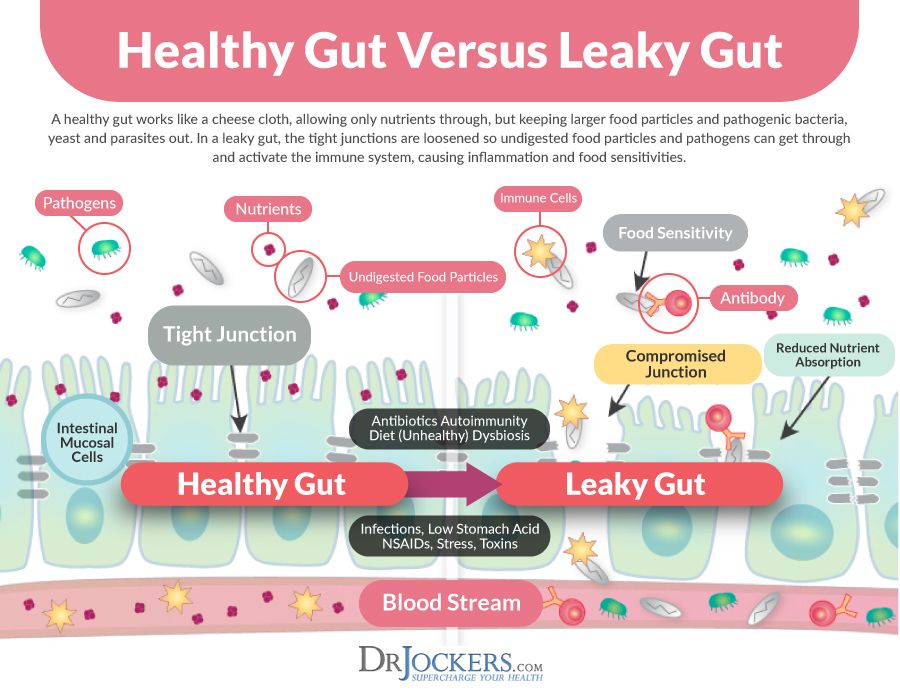 They will be the main microorganisms that colonize the vagina during the entire reproductive period. Lactobacilli produce hydrogen peroxide and lactic acid, lowering the pH to 4.5 and below, which prevents the reproduction of pathogenic microorganisms in the genital tract.
They will be the main microorganisms that colonize the vagina during the entire reproductive period. Lactobacilli produce hydrogen peroxide and lactic acid, lowering the pH to 4.5 and below, which prevents the reproduction of pathogenic microorganisms in the genital tract.
In girls who have reached puberty, vaginal discharge is the result of the functioning of various glands in the vulva, sebaceous, sweat, Bartholinian and Skinian glands. Also in the mucus, desquamated epithelial cells and a discharge of the cervical canal can be found. Such a secret has a color from transparent to white and does not stick to the walls of the vagina and vulva.
Physiological hormonal changes during the menstrual cycle, various diseases, and stressors can affect the consistency and amount of normal vaginal discharge, which may be similar to a yeast infection. However, in this case, treatment is not required.
How can I suspect thrush in a girl?
The most common symptoms of “thrush” are itching in the vulva, burning sensation in the vagina, reddening of the genital tract mucosa and the appearance of profuse cheesy discharge without a specific odor.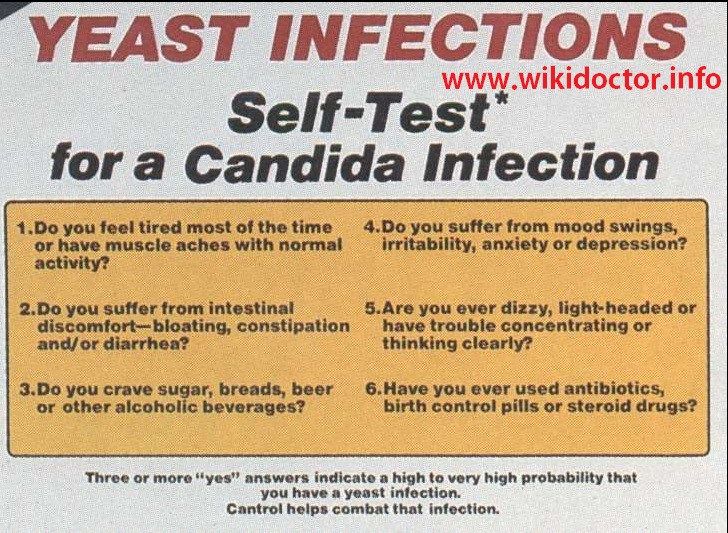 Also, discomfort during urination often appears, similar to manifestations of cystitis, which can lead to incorrect treatment tactics. It is very important to remember that characteristic symptoms do not always indicate that their appearance is due to yeast-like fungi. It is believed that whitish discharge and itching in only 30% of cases indicate the development of candidiasis.
Also, discomfort during urination often appears, similar to manifestations of cystitis, which can lead to incorrect treatment tactics. It is very important to remember that characteristic symptoms do not always indicate that their appearance is due to yeast-like fungi. It is believed that whitish discharge and itching in only 30% of cases indicate the development of candidiasis.
Confirmation of the diagnosis
Diagnosis of vulvovaginal candidiasis is established on the basis of complaints, examination and bacteriological examination. On examination, the labia and vaginal walls are swollen, the mucous membrane looks bright pink or red. Possible scratching on the skin of the perineum due to severe itching. A thick white discharge is also visualized, which is tightly adjacent to the mucosa.
To confirm the diagnosis, a vaginal swab is taken, in which accumulations of fungal cells, pseudomycelium, and a large number of leukocytes, indicating an inflammatory process, are determined. Carrying out sowing on a nutrient medium is not necessary. This research method is appropriate if the smear result does not confirm the diagnosis. Also, sowing is carried out in the case of recurrent candidiasis, when it is necessary to determine the sensitivity of isolated microorganisms to antifungal drugs.
Carrying out sowing on a nutrient medium is not necessary. This research method is appropriate if the smear result does not confirm the diagnosis. Also, sowing is carried out in the case of recurrent candidiasis, when it is necessary to determine the sensitivity of isolated microorganisms to antifungal drugs.
What to do?
Many mothers, who are already familiar with the infection caused by yeast-like fungi, prefer not to go to the gynecologist, but to treat themselves. According to US analysts, the annual turnover of over-the-counter drugs for the treatment of “thrush” exceeds $ 269 million. Unfortunately, inadequate treatment regimens only lead to the disappearance of symptoms and the transition of the infection to a chronic relapsing form.
In addition, fungal resistance to antifungal drugs may develop, making further treatment extremely difficult. Often, patients independently begin treatment without confirming the diagnosis, based only on clinical manifestations. Such tactics can lead to the fact that the true pathogen will continue to grow and reproduce, and the appointment of a reasonable treatment will occur untimely.
Such tactics can lead to the fact that the true pathogen will continue to grow and reproduce, and the appointment of a reasonable treatment will occur untimely.
Therefore, only a specialist can prescribe therapy.
In the case of a new infection, only topical treatment is usually sufficient. There are many drugs for vaginal use on the pharmaceutical market, including for girls who are not sexually active. An alternative is to take fluconazole preparations, 150 mg, by mouth. This treatment is thought to be as effective as 7 days of vaginal antifungal therapy and may be appropriate for those who find vaginal administration of drugs uncomfortable.
In the case of recurrent vaginal candidiasis, an examination should be carried out to determine the cause of the decrease in the protective properties of the immune system (for example, diabetes mellitus).
Prevention
In some cases, candidiasis can be prevented by not using perfumed soap.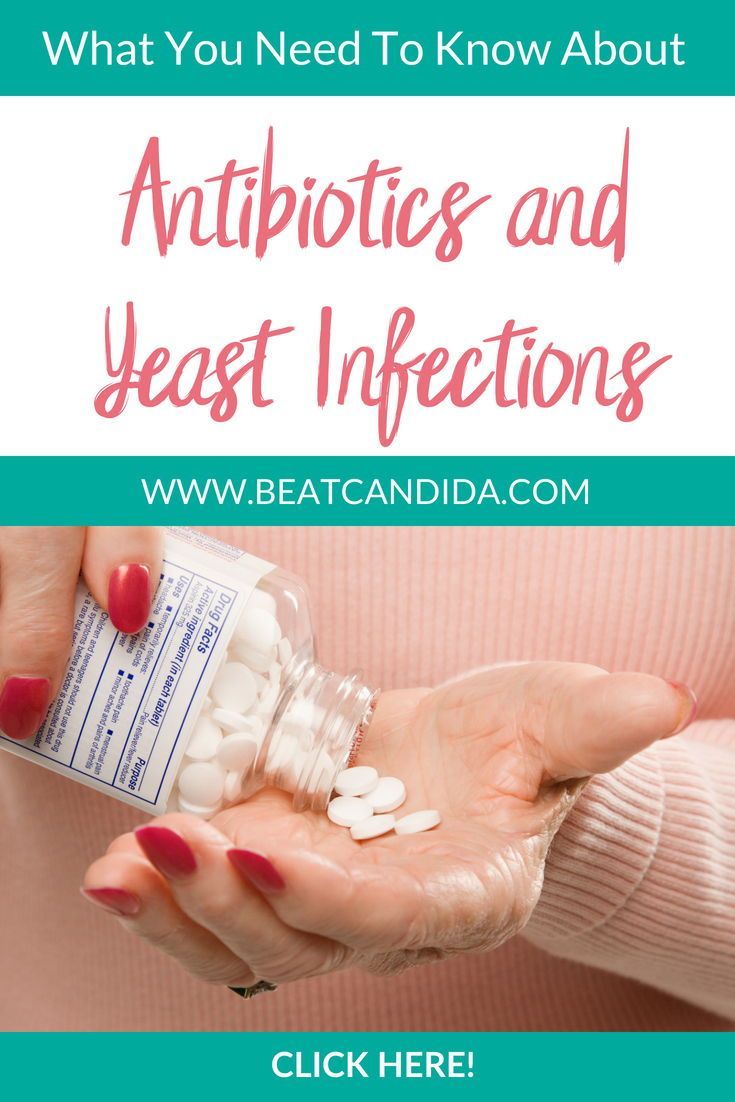 For intimate hygiene, it is advisable to use special gels that have the necessary acidity (pH), corresponding to the pH of the vagina. Some shower gels, bath foams, and laundry detergents can cause an allergic reaction and encourage the growth of yeast-like fungi. It is also recommended to wear underwear made of cotton or with a cotton gusset that does not retain moisture and allows air to circulate.
For intimate hygiene, it is advisable to use special gels that have the necessary acidity (pH), corresponding to the pH of the vagina. Some shower gels, bath foams, and laundry detergents can cause an allergic reaction and encourage the growth of yeast-like fungi. It is also recommended to wear underwear made of cotton or with a cotton gusset that does not retain moisture and allows air to circulate.
After swimming, swimming or exercising, it is very important to change your synthetic swimsuit or suit for dry, loose-fitting clothing as soon as possible. Dietary changes may also be helpful.
It is very important to exclude easily digestible carbohydrates from the diet – sugar and all products containing it – sweets, confectionery, juices.
Although yeast-like fungi are not synonymous with yeast used in the baking industry, cross-reactions are possible. Thus, food products containing yeast (bread, vinegar) can provoke a recurrence of the disease.


 This can cause vaginal candidiasis to develop.
This can cause vaginal candidiasis to develop.